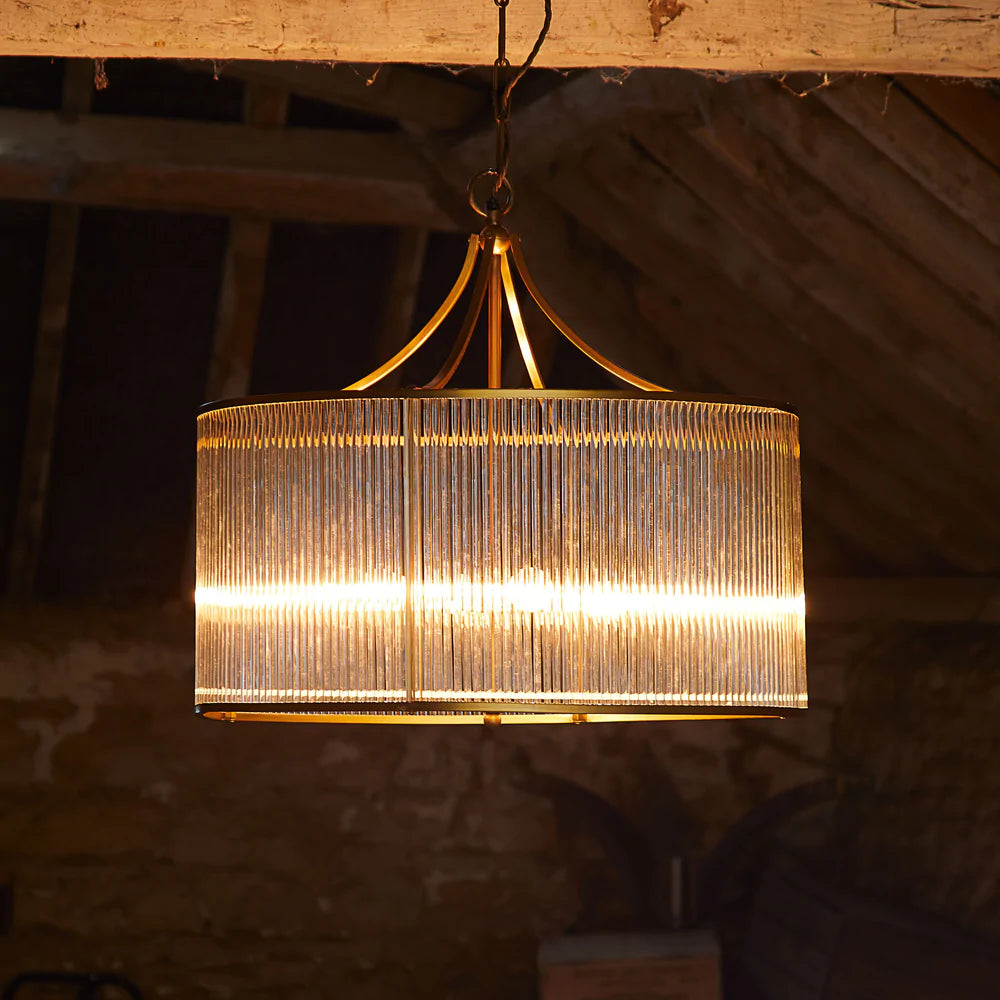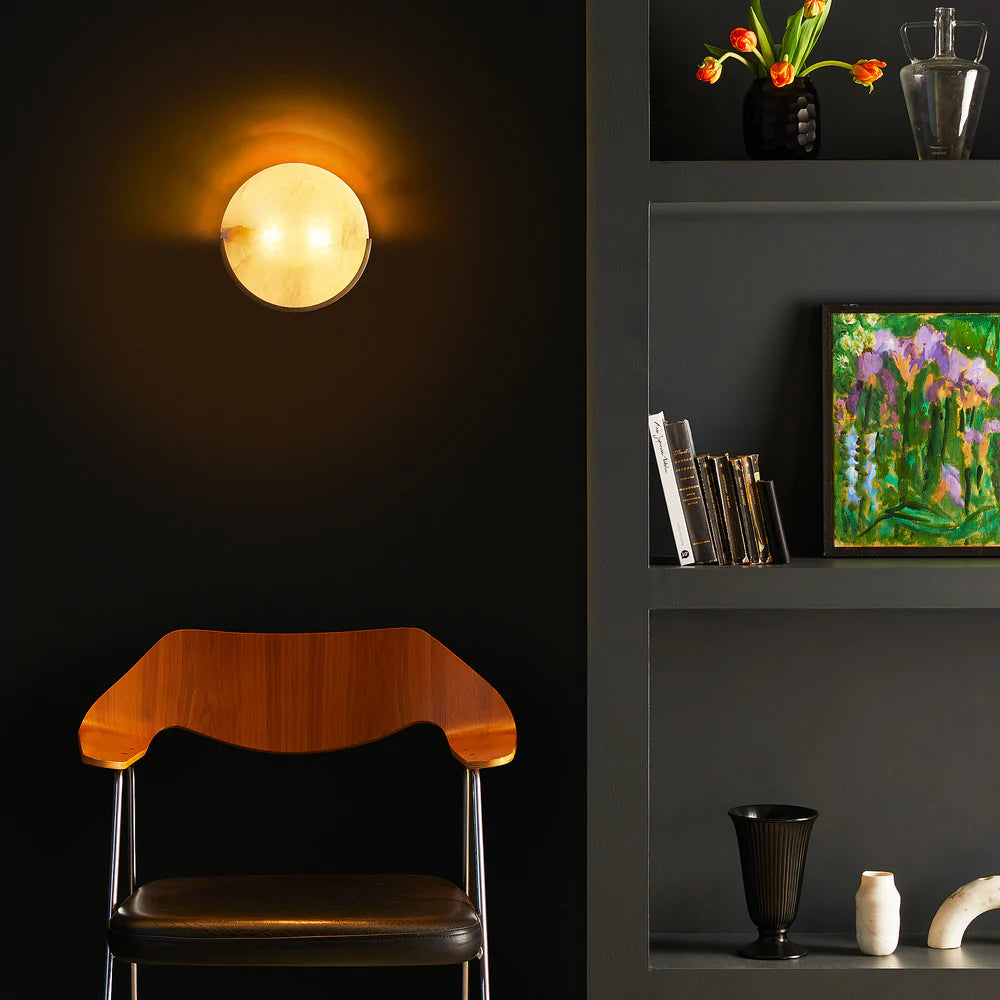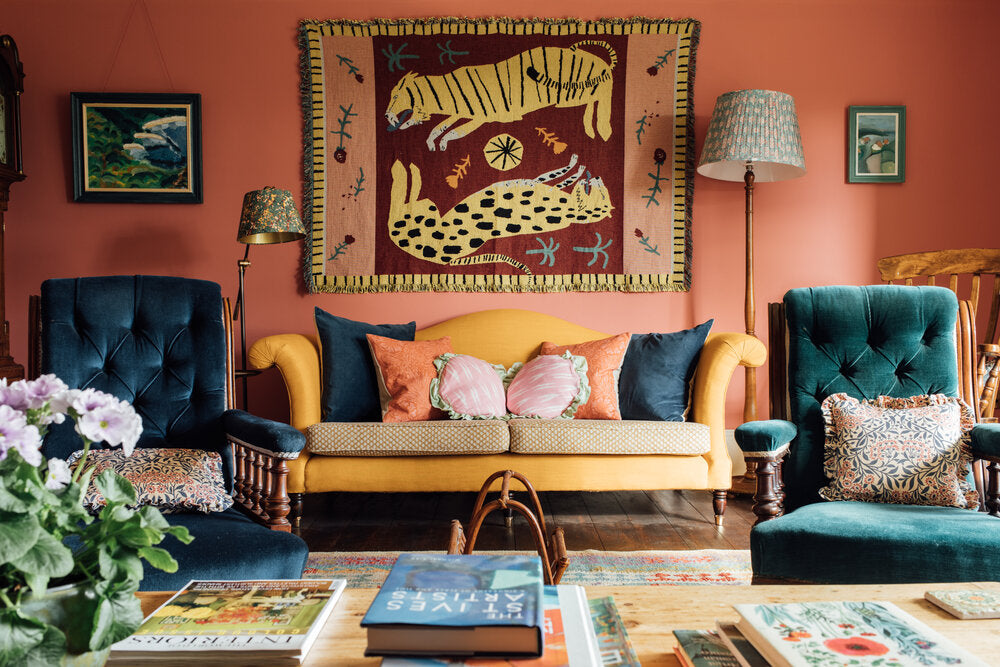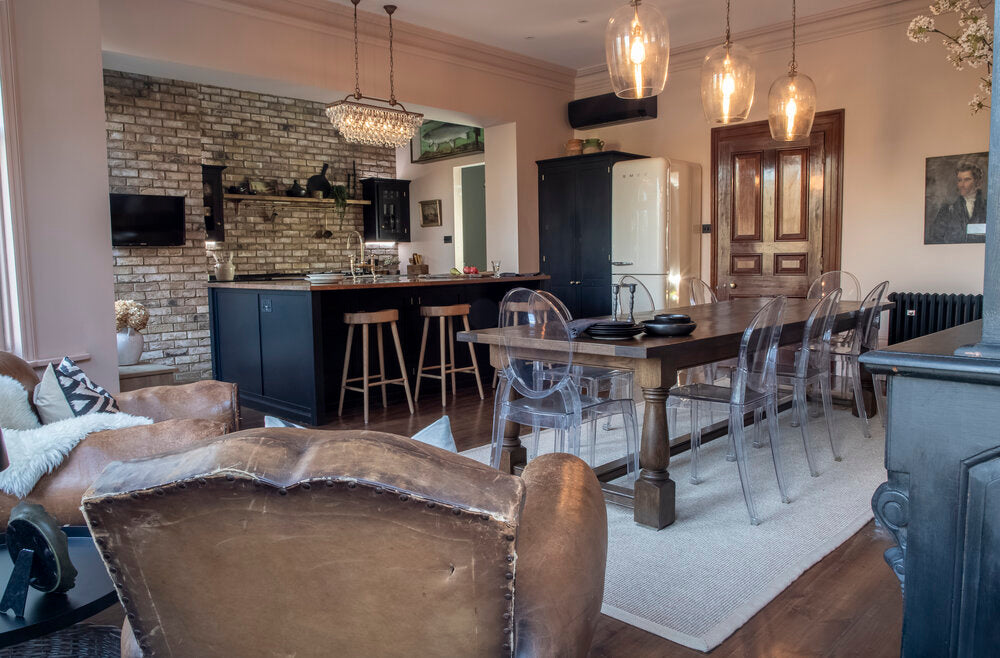Confused by the science (and art) of lighting a space? Answering these five questions can help you light your home like a pro interior designer…
As every interior designer knows, getting the lighting right is critical to creating a beautiful room. But how do you where to start with that curious mixture of science and art? Professionals just seem to know what they’re doing when it comes to layering light, or mixing and matching different kinds of lamp and shade.
But if you feel a bit intimidated by the whole thing, there’s really no need to be. Just ask yourself these five questions and it will all fall into place…
1. How much light do I need?
Start by working out how much light you need in your space.
This will depend on a number of things, including the size and layout of the room, as well as how you want to use it. But as a handy rule of thumb, in a sitting room or bedroom you will need around 10-20 lumens per square foot, while a bathroom or kitchen requires around 70-80 lumens per square foot.
To get an idea of the basic lumens required for your space, multiply the length and width of the room to get the square footage, and multiply that number by the relevant figures for the type of room to get the ranges of lumens. (So for example, in a large 300 sq ft living room you'd want between 3000 and 6000 lumens). Then make sure the bulbs in the room - from ceiling lights, wall lights and lamps - add up to somewhere in that range.
Find out more about lumens, and how to light different spaces within your home, in our expert guide: How much light do you need in a room?
 Pooky's Artemis chandelier - with four 4 watt LED bulbs it will provide around 1,880 lumens of overhead light
Pooky's Artemis chandelier - with four 4 watt LED bulbs it will provide around 1,880 lumens of overhead light
2. How do I actually want to use the space?
As well as the basic level of lumens, it’s important to think about how you want the room to work for you in daily life. Different spaces have different (or even multiple) lighting requirements, and you can cater for this by using a range of light sources.
There are three main types of lighting: ambient lighting, which is the general overall lighting in a room, including the main ceiling light; task lighting, which is targeted lighting for specific activities, such as reading or cooking; and accent lighting, which is used to highlight features and to create atmosphere. By combining these different types – known as layering your lighting – you can ensure a good balance of practical light when and where you need it, while also providing some gentler lighting for relaxing or entertaining.
Read more about layering light and achieving balance in your space: Home lighting design: A guide to layering light
3. What kind of atmosphere do I want to create?
In addition to the practical requirements, lighting is perhaps the key factor in determining the atmosphere of a room. Higher levels of light have a stimulating effect, while introducing soft, warm layers of lighting will help to create a feeling of cosiness and intimacy in a living space such as the sitting room or dining room.
Rather than relying on a single overhead light, which can create glare and shadows, try using different types of lighting at different points within the space. A combination of wall lights, floor lamps and table lamps will provide layers of gentler, more diffused light. Finally, add in some dimmer switches so you can adjust the lights to achieve just the right vibe.
Find out more about setting the mood here: How to create mood with lighting - 7 expert tips.
 Pooky's Plato wall light in alabaster and brass provides instant atmosphere
Pooky's Plato wall light in alabaster and brass provides instant atmosphere
4. What’s my design theme?
Your lighting scheme can help to set the interior design tone of your space, and your choice of styles and materials can have a significant effect on the way a room looks and feels.
When choosing your lighting, you should take into account the existing style and decor of the room. You can complement the design style by matching like with like: for example, a contemporary style of light fitting with sleek, clean lines will fit well within a modern space, while a more classic style and shape will suit a more traditional setting.
Meanwhile, designer lampshades are an effective (and inexpensive) way of introducing some colour and texture into your design scheme. Lampshades come in all sorts of different materials and designs, from silk and parchment to block printed cotton, jute and ikat, each of which has its own beautiful characteristics, and each of which diffuses the light differently.
Find your perfect lampshade: How to choose a lampshade – the complete guide
5. How can I make the space special?
Finally, there's the very important matter of... your personality. Once you’ve got the essentials sorted, you can have a bit of fun. Mix and match – or mix and mismatch – the choice is yours, so why not get creative…
Make a shimmering spectacle in the bedroom with a designer chandelier, stand an eye-catching oversize floor lamp in a corner of the sitting room, or pair an uber contemporary designer table lamp with a traditional lampshade (or vice versa) for a dramatic focal point.
 Glebe House. Interior design by Studio Alexandra. Photo by Finn Studio.
Glebe House. Interior design by Studio Alexandra. Photo by Finn Studio.
Feeling inspired? Find more lightbulb moments on the Pooky blog.
Browse our full range of beautiful, affordable lighting for beautiful homes.
Picture top: living space by Claire Botha of Geek Vintique











